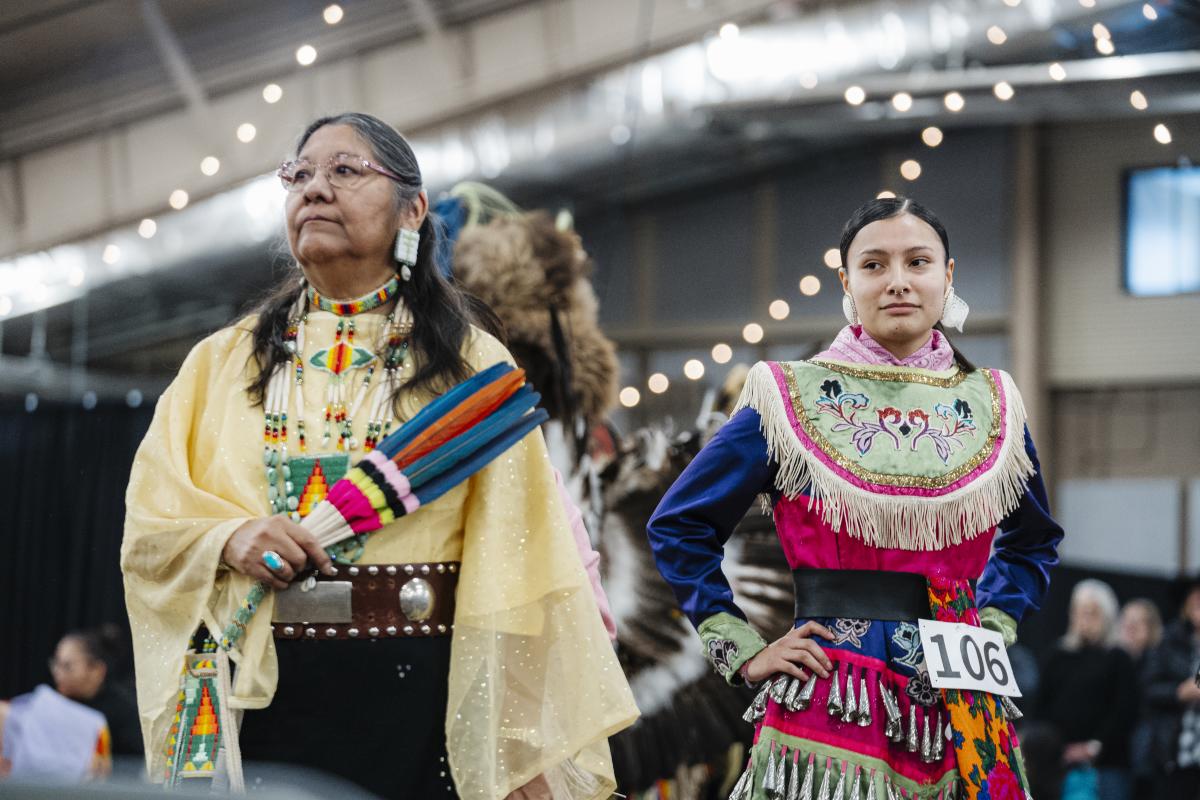Long before Rocky Mountain National Park became a popular destination for hiking, camping, and exploring nature, this land belonged to Indigenous tribes who called the mountains and valleys their home. Places like Estes Park, nestled in the heart of the Rocky Mountains, were part of their everyday lives. Understanding their story helps us appreciate the deep connection between people and this land.
The First People of the Rockies
Photo Credit: Colorado Historical Society
The Ute Indian Tribe is considered the oldest continuous group living in Colorado. For thousands of years, the Ute moved with the seasons—spending warm months in the high mountain valleys of the Rockies and the cold months in the lower plains. The mountains provided everything they needed: food, shelter, water, and spiritual meaning.
Other tribes like the Arapaho, Cheyenne, Comanche, and Kiowa also traveled this land. Trails through Estes Park and the national park were routes for hunting and gathering, connecting people to the land’s rich resources.
Food and Shelter: How Did They Live?
The Rocky Mountains were home to elk, deer, bighorn sheep, and other animals that provided meat for Indigenous tribes. The same elk that occasionally wander down Elkhorn Avenue or find rest in Bond Park—right in the heart of Estes Park—and the bighorn sheep roaming Moraine Park and Sheep Valley today were the very animals that sustained Native people centuries ago. Thanks to Claire’s Restaurant, a live webcam offers a view of Bond Park and a stretch of Elkhorn Avenue, giving visitors a chance to glimpse the vibrant mountain town and the wildlife that continues to frequent the area.
Alongside hunting, gathering wild berries, roots, and nuts were essential. Today, hikers on trails like Wild Basin and Lily Lake can still find these plants, bridging past and present.
For shelter, tribes like the Ute used tipis made of animal hides—portable homes suited to a life moving with the seasons and the herds. These dwellings blended naturally with the environment, reflecting a deep respect for nature.
A Living Connection to the Land

Throughout the 1800s, tribes who had long moved through and cared for these lands were increasingly displaced by the pressures of U.S. expansion, land seizure, and restrictive federal policies—but their spiritual and cultural connection to the region endures. They continue to honor these mountains through traditions, ceremonies, and cultural practices that remind us the land is more than just a beautiful place—it’s a living part of their identity.
Each year, Estes Park hosts the First Peoples Festival, a celebration honoring the Indigenous tribes who have called this land home for thousands of years. The festival offers music, dance, storytelling, and cultural events that invite visitors to learn about and appreciate the enduring presence of indigenous peoples in the region.
Estes Park’s retail scene also honors this heritage—shops like The Trading Post and Estes Park Gallery & Gifts offer beautiful Native-inspired jewelry and art, providing visitors a way to connect with indigenous culture through handcrafted creations.
Today’s Partnership: Respecting History and Culture
The National Park Service now works closely with tribal governments to ensure that Native voices are included in decisions about the park. This collaboration protects sacred sites, preserves cultural stories, and celebrates Indigenous heritage. Rocky Mountain National Park hosts events featuring Native songs, dances, and storytelling that share the rich culture of the tribes connected to this land.
Why This Matters
Rocky Mountain National Park is more than just a destination for outdoor adventure—it’s a place layered with history, culture, and meaning. When visiting Estes Park or hiking the park’s trails, it’s worth remembering the generations of Native tribes who lived in harmony with these mountains long before us. Their stories are woven into every valley and ridge, shaping the park’s spirit today.
The story of Estes Park doesn’t end with Native tribal history. As time went on, settlers like Joel Estes arrived and began shaping the town and region. To learn how Estes Park grew from this indigenous heritage into the community it is today, explore our blog about Estes Park’s first settlers and their impact on the land and people.
